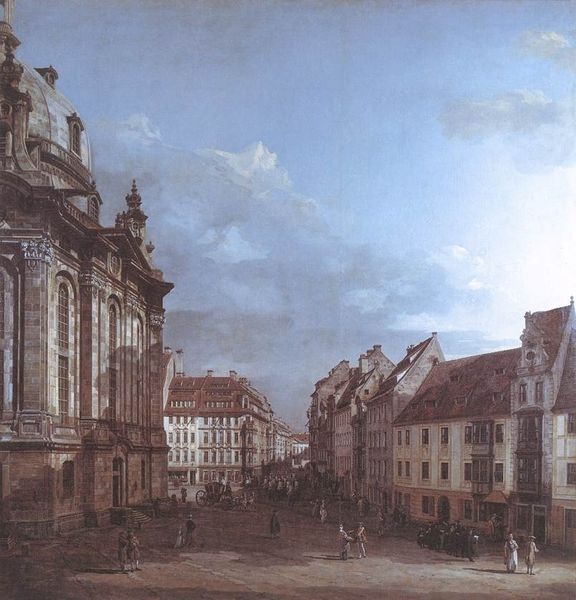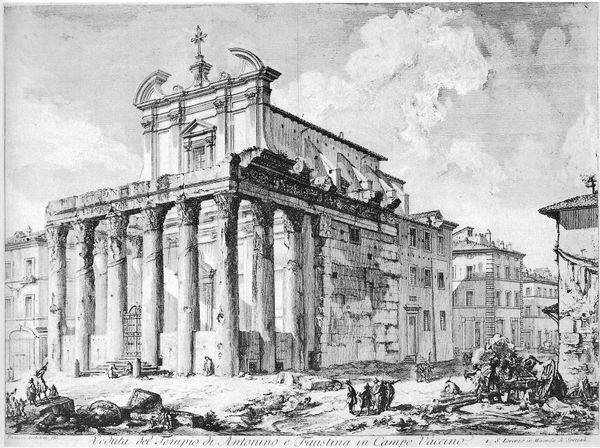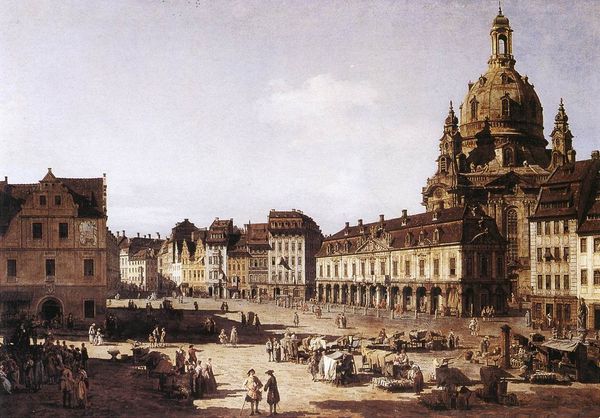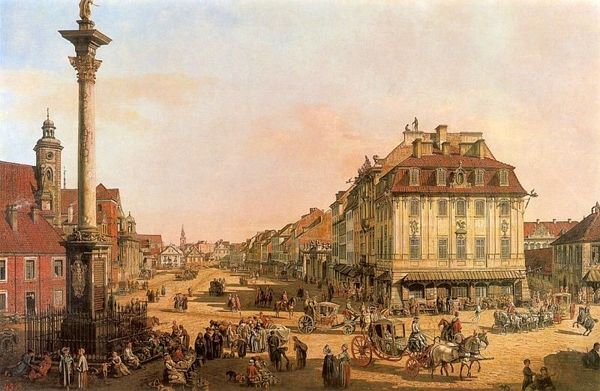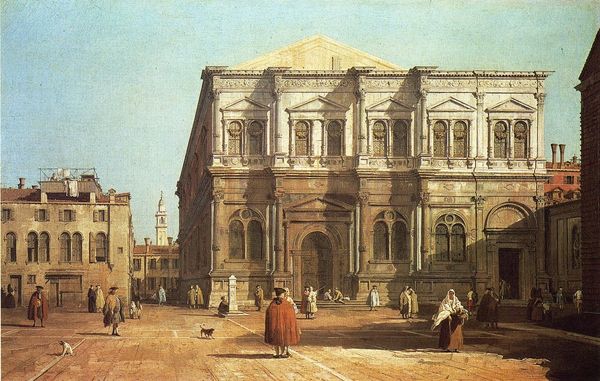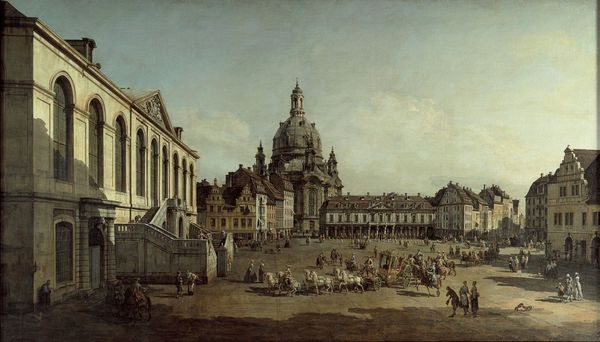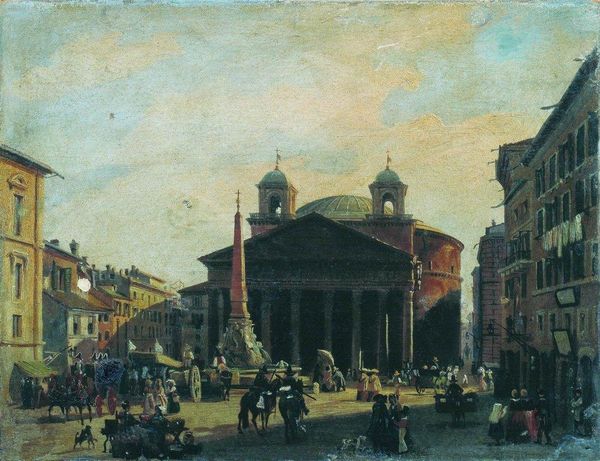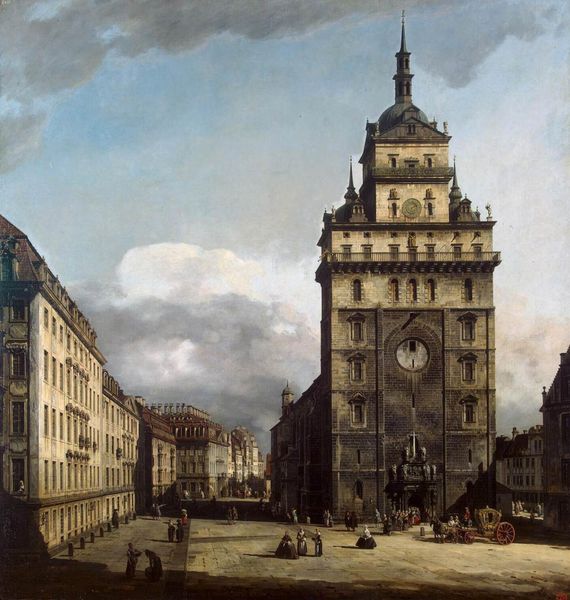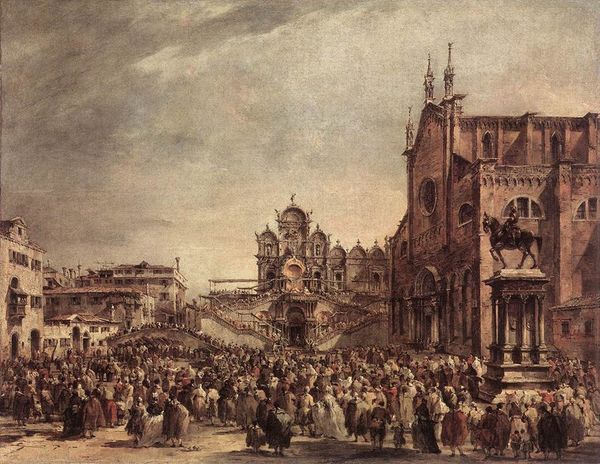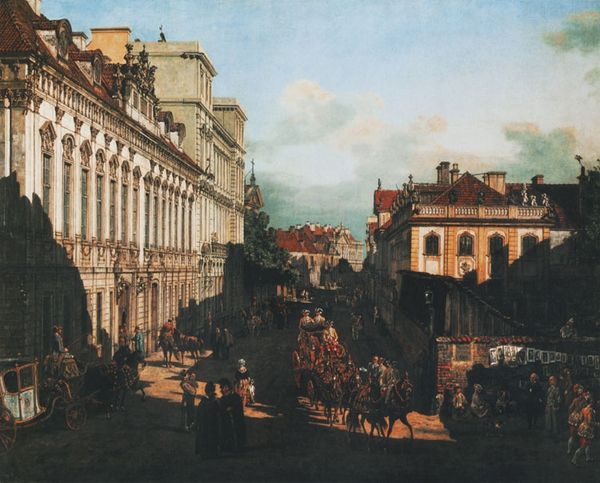
Copyright: Public domain
Curator: This watercolor painting, circa 1780, presents us with Bernardo Bellotto's view of the Carmelite Church in Warsaw, part of his famed series capturing the city. What strikes you initially about the composition? Editor: There’s a luminous quality; it’s quite remarkable for watercolor. The artist has created an interplay of light and shadow. It creates a sense of depth across the architectural forms that draws the eye toward that central structure. Curator: Absolutely. Bellotto, also known as Canaletto the Younger, was commissioned by King Stanisław August Poniatowski to document Warsaw, particularly as it underwent significant reconstruction. These paintings were not merely aesthetic; they were essential tools in urban planning and national identity. Editor: I'm fascinated by the architectural details, specifically the way the Rococo elements interplay with the stronger neoclassical influences of the time. Observe how the eye jumps from the ornamental facade, down those supporting columns. Curator: And within those Rococo and Neoclassical elements is evidence of a city very much alive, socially and politically. You see everyday people interacting, going about their lives, alongside what may well be political figures of note. The Church, visually prominent, clearly played a large role in their society at the time. Editor: Notice, too, how the subdued palette amplifies the textures. You get a sense of age, of history layering itself upon the architecture, almost as though you're handling rough parchment in your own hands. Curator: And, in the context of its commission, remember that these scenes were consciously constructed to project an image of a modern, vibrant capital, integral to the king’s agenda of reform and cultural development. It is the imagery of power and prosperity. Editor: The use of watercolor serves the subject perfectly—capturing not just the likeness but the very atmosphere of Warsaw at the cusp of a new era. Curator: Indeed. Bellotto provided not just documentation, but a political statement about Poland's place on the European stage, and left us with quite a visual record of the city’s life during his time.
Comments
No comments
Be the first to comment and join the conversation on the ultimate creative platform.


